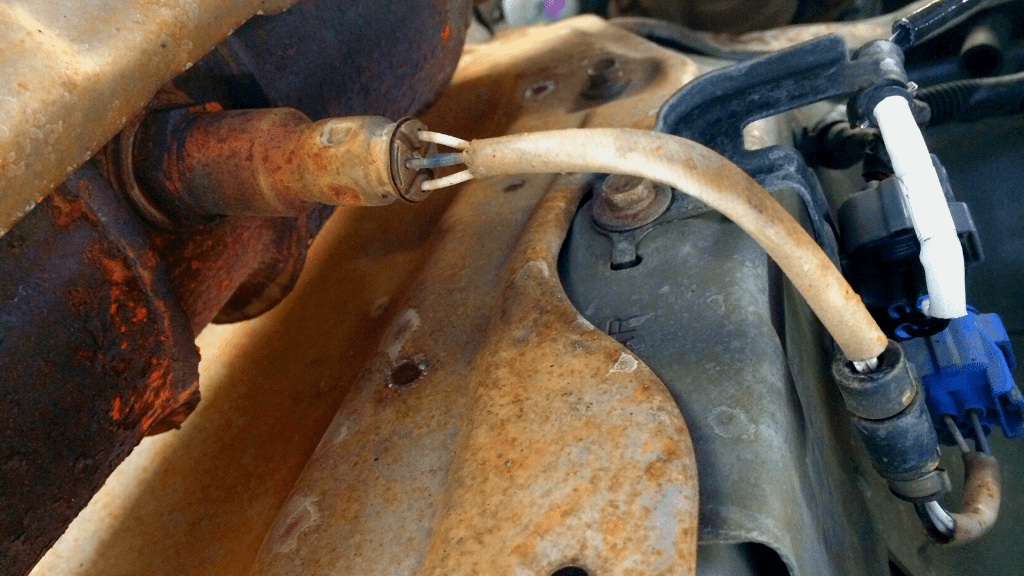
HOW TO TEST O2 SENSOR WITH A MULTIMETER
Content
Without explanation, your car's engine is fragile and probably the most important component of your car.
There are many sensors that make it work in the most optimal conditions, and when one of them fails, the engine is in danger.
Are you having engine problems?
Have you run tests on more popular sensors like crankshaft sensor or throttle position sensor and still run into the same problem?
Then the O2 sensor might be the less popular culprit.
In this post, we'll walk you through the entire process of checking O2 sensors, from understanding what they are to using a multimeter to make various diagnoses.
Let's get started.

What is an O2 sensor?
An O2 sensor or oxygen sensor is an electronic device that measures the amount of oxygen in the air or liquid around it.
When it comes to vehicles, the oxygen sensor is a device that helps the engine regulate the ratio of air to fuel.
It is located in two places; either between the exhaust manifold and the catalytic converter, or between the catalytic converter and the exhaust port.
The most common type of O2 sensor used in automobiles is the wideband zirconia sensor, which has four wires connected to it.
These wires include one signal output wire, one ground wire, and two heater wires (same color).
The signal wire is the most important for our diagnosis and if your oxygen sensor is faulty you would expect your engine to suffer and show certain symptoms.
Symptoms of a failed O2 sensor
Some of the symptoms of a bad O2 sensor include:
- Burning check engine light on the dashboard,
- Rough engine idling
- Bad smell from the engine or exhaust pipe,
- Jumping motor or power surges,
- Poor fuel economy and
- Poor vehicle mileage, among other things.
If you don't replace your O2 sensor when it develops problems, you risk even more shipping costs, which can run into the thousands of dollars or your local currency.

How do you check for problems with the O2 sensor?
A great tool for troubleshooting electrical components is the digital voltmeter you need.
How to test an O2 sensor with a multimeter
Set your multimeter to the 1 volt range, probe the oxygen sensor signal wire with a pin, and warm up the vehicle for about five minutes. Connect the multimeter's positive probe to the back probe's pin, ground the black probe to any metal nearby, and test the multimeter reading between 2mV and 100mV.
Many additional steps are required, so we will continue to explain all the steps in detail.
- Take preventive measures
The proactive steps here will help you avoid the subsequent rigorous tests you have to do with your O2 sensor to find a problem with it.
First, you visually inspect the wires to see if they are damaged or dirty.
If you don't find a problem with them, you will continue to use a scanning tool such as an OBD scanner to get error codes.
Error codes such as P0135 and P0136, or any other code that indicates a problem with the oxygen scanner, means you don't need to run further tests on it.
However, the multimeter tests are more detailed, so you may need to perform additional tests.
- Set multimeter to 1 volt range
Oxygen sensors operate in millivolts, which is a fairly low voltage measurement.
To perform an accurate oxygen sensor test, you need to set your multimeter to the lowest DC voltage range; 1 volt range.
The readings you get range from 100 millivolts to 1000 millivolts, which corresponds to 0.1 to 1 volt respectively.
- Rear probe O2 sensor signal wire
You need to test the O2 sensor while its connecting wires are connected.
Inserting the multimeter probe into the socket is difficult, so you need to secure it with a pin.
Simply insert a pin into the output wire terminal (where the sensor wire plugs in).
- Place the multimeter probe on the rear probe pin
Now you connect the red (positive) test lead of the multimeter to the rear test lead, preferably with an alligator clip.
You then ground the black (negative) probe to any metal surface nearby (such as your car's chassis).

- Warm up your car
For O2 sensors to work accurately, they must operate at temperatures around 600 degrees Fahrenheit (600°F).
This means that you must start and warm up your vehicle's engine for approximately five (5) to 20 minutes until your vehicle reaches this temperature.
Be careful when the car is so hot that you don't burn yourself.
- Rate results
Once you've placed the probes in the correct positions, it's time to check your multimeter readings.
With a warm oxygen sensor, the DMM is expected to give readings that fluctuate rapidly from 0.1 to 1 volt if the sensor is good.
If the reading stays the same at a certain value (usually around 450 mV/0.45 V), the sensor is bad and needs to be replaced.
Going further, a reading that is constantly lean (below 350mV/0.35V) means there is little fuel in the fuel mixture compared to the intake, while a reading that is constantly high (above 550mV/0.55V) means that there is a lot of fuel. fuel mixture in the engine and lower air intake.
Low readings can also be caused by a faulty spark plug or exhaust leak, while high readings can additionally be caused by factors such as
- O2 sensor has a loose ground connection
- EGR valve stuck open
- Spark plug that is in close proximity to the O2 sensor
- Contamination of the O2 sensor wire due to silicon poisoning
There are now additional tests to determine if the O2 sensor is working properly.
These tests respond to a lean or high mixture and help us diagnose if the sensor is working properly.
Lean O2 Sensor Response Test
As mentioned earlier, a lean mixture naturally causes the oxygen sensor to read low voltage.
When the sensor reading is still fluctuating between 0.1 V and 1 V, disconnect the vacuum hose from the positive crankcase ventilation (PCV).
The multimeter is now expected to output a low value of 0.2V to 0.3V.
If it does not consistently stay between these low readings, then the sensor is faulty and needs to be replaced.
Testing the response of the O2 sensor to a rich mixture
On a high mix test, you want to leave the vacuum hose connected to the PCV and disconnect the plastic hose going to the air filter assembly instead.
Cover the hose hole on the air cleaner assembly to keep air out of the engine.
Once this is done, the multimeter is expected to display a constant value of around 0.8V.
If it does not show a constant high value, then the sensor is faulty and needs to be replaced.
You can further test the O2 sensor heater wires with a multimeter.
Checking the O2 Sensor Through the Heater Wires
Turn the multimeter dial to the ohmmeter setting and feel the O2 sensor heater wire and ground wire terminals.
Now connect the positive lead of the multimeter to one of the heater wire rear sensor pins and the negative lead to the ground wire rear sensor lead.
If the oxygen sensor circuit is good, you will get a reading of 10 to 20 ohms.
If your reading does not fall within this range, the O2 sensor is defective and needs to be replaced.
Conclusion
Checking the O2 sensor for damage is a procedure that includes several steps and testing methods. Be sure to complete them all so that your test is exhaustive, or contact a mechanic if they get too difficult.
F.A.Q.
How many ohms should an oxygen sensor read?
An oxygen sensor is expected to show resistance between 5 and 20 ohms, depending on the model. This is obtained by checking the heater wires with ground wires for damage.
What is the normal voltage range for most O2 sensors?
The normal voltage range for a good O2 sensor is a rapidly changing value between 100 millivolts and 1000 millivolts. They are converted to 0.1 volts and 1 volts respectively.

